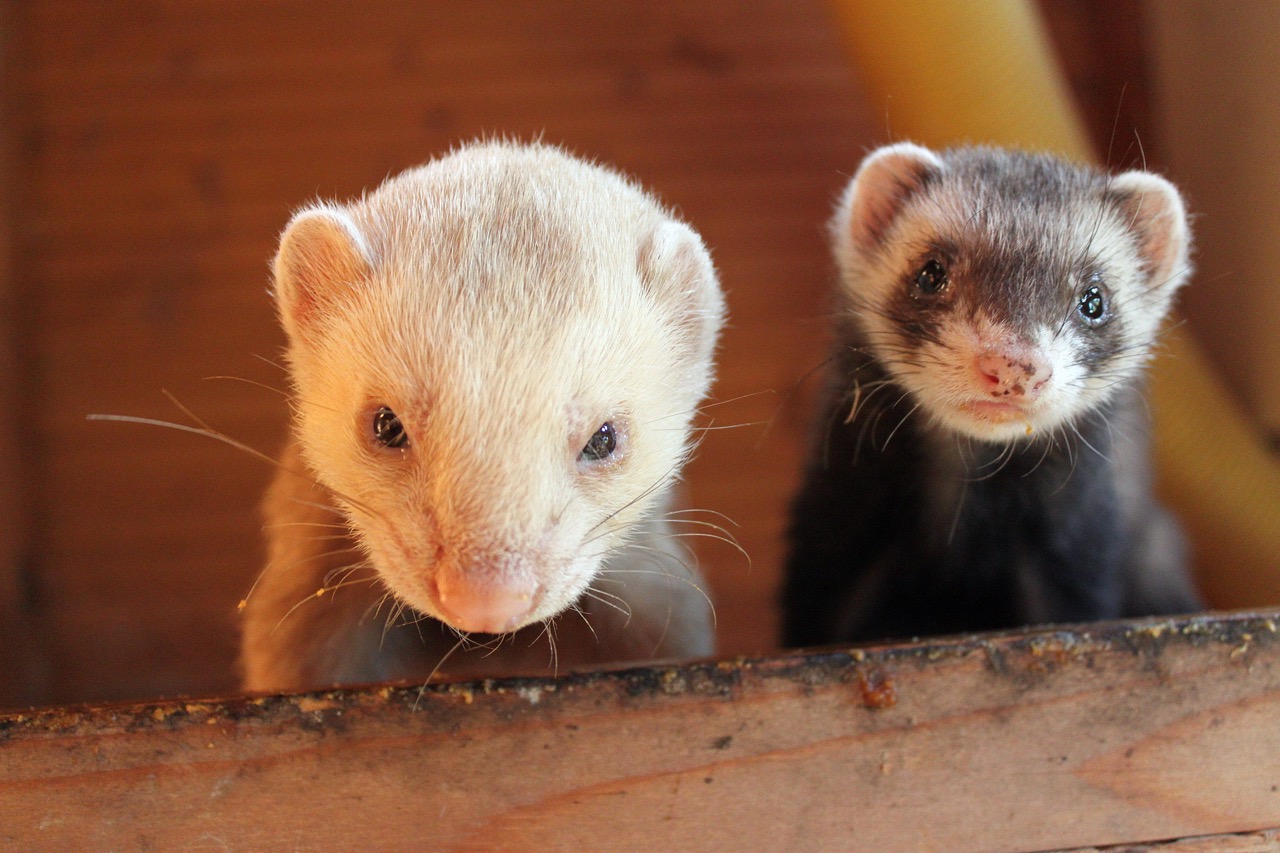Pheromones are chemical signals that play a crucial role in communication among various animal species, and ferrets are no exception. These small yet intelligent mammals utilize pheromones to convey critical information about their environment, social status, and reproductive readiness. Understanding ferret pheromones not only enriches our knowledge of their behavior but also enhances the quality of their care in domestic settings. This article will delve into the multifaceted role of pheromones in ferret communication, exploring their functions, types, impacts on social structures, and implications for breeding practices.
Understanding Ferret Pheromones and Their Functions
Ferrets, like many other mammals, produce pheromones that act as powerful chemical messengers. These substances are secreted through various glands in the body, including the sebaceous glands, anal glands, and others. When released into the environment, pheromones can influence the behavior of other ferrets by triggering specific responses. This communication mechanism is essential for establishing social hierarchies, signaling reproductive status, and even marking territory.
The detection of these pheromones occurs primarily through the vomeronasal organ (VNO), located in the nasal cavity. This specialized organ allows ferrets to sense these chemical signals even in small concentrations, enabling them to receive vital social information. For example, pheromones can indicate when a ferret is in heat, helping others to assess the best times for mating. Moreover, pheromones can communicate a ferret’s emotional state, such as stress or contentment, contributing to the overall social dynamics within a group.
Another critical function of pheromones is their role in mother-offspring communication. Mother ferrets use specific pheromones to guide their kits, ensuring their safety and well-being. These chemical signals can help the kits identify their mother and communicate their needs, such as hunger or discomfort. This form of chemical communication is vital for the survival of young ferrets, promoting bonding and care during their vulnerable early stages of life.
Types of Pheromones: Social Signals in Ferret Behavior
Ferrets produce various types of pheromones, each serving distinct functions related to social interaction and behavior. One prominent category is reproductive pheromones, which play a significant role during mating seasons. Female ferrets release pheromones that signal their estrous cycle, attracting male ferrets. These reproductive signals are crucial for ensuring genetic diversity and the continuation of the species.
Another important type of pheromone is territorial pheromones. Ferrets are known to establish territories, and they use specific scents to mark their domains. By depositing pheromones in their environment, ferrets communicate their presence and assert dominance over a given area. This behavior can deter rival ferrets and reduce the likelihood of physical confrontations, which could be detrimental to their welfare.
Additionally, alarm pheromones are utilized by ferrets to alert others to potential dangers. When a ferret senses a threat, it may release specific pheromones that trigger a flight response in its companions. This rapid communication method is vital for group survival, allowing ferrets to react swiftly to predators or other environmental hazards. The awareness of these pheromones further demonstrates the complexity of ferret social interactions and their reliance on chemical signals for effective communication.
The Impact of Pheromones on Ferret Social Structures
The presence of pheromones significantly influences the social hierarchy within ferret groups. Dominant individuals often have a distinct scent that sets them apart from subordinates. This olfactory differentiation helps maintain order within the group, as lower-ranking ferrets can identify their place in the social structure based on the pheromonal cues emitted by their more dominant counterparts. The ability to recognize these pheromones can reduce aggression and promote social cohesion among ferrets.
Furthermore, pheromonal communication also impacts mating behavior and success. In ferret populations, the release of reproductive pheromones can attract multiple mates, leading to competitive interactions. Males may engage in displays of dominance, influenced by their pheromonal scent, which can determine mating opportunities. This competition for mates encourages genetic diversity and healthy populations, contributing to the overall adaptability of ferrets in the wild.
Lastly, the nuances of pheromone signaling can also affect the overall well-being of domesticated ferrets. Understanding these chemical cues can help owners create environments that foster positive social interactions, ultimately benefiting the mental and physical health of their pets. By minimizing stressors and recognizing the significance of pheromonal cues, caregivers can nurture a more harmonious living situation for their ferrets.
Implications for Ferret Care and Breeding Practices
Understanding the role of pheromones in ferret communication has significant implications for their care. For instance, recognizing when a ferret is stressed or uncomfortable can be facilitated by paying attention to the pheromonal signals they emit. Caregivers can create a more supportive environment by minimizing stressors such as loud noises or overcrowded living conditions, allowing ferrets to communicate their needs more effectively.
In terms of breeding practices, knowledge of ferret pheromones can enhance breeding success. By understanding the timing of ovulation through the detection of female pheromones, breeders can optimize mating schedules to ensure successful pairings. This awareness can lead to healthier litters and improved genetic diversity, contributing to the overall vitality of domesticated ferret populations.
Moreover, education on pheromonal behaviors can empower ferret owners to facilitate introductions between new ferrets. Familiarizing ferrets with each other’s scents can ease transitions and reduce territorial conflicts. By using pheromonal cues effectively, caregivers can improve social dynamics, making cohabitation smoother and more enjoyable for all ferrets involved.
The role of pheromones in ferret communication is a complex yet fascinating aspect of their behavior. These chemical signals serve various functions ranging from reproductive cues to social hierarchies, influencing everything from group dynamics to individual well-being. By understanding the significance of pheromones in ferret interactions, caregivers and breeders can enhance their practices and improve the lives of these beloved pets. Ultimately, a deeper appreciation of pheromonal communication contributes not only to better care but also to a more enriching experience for both ferrets and their human companions.










